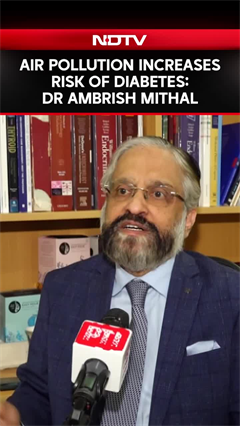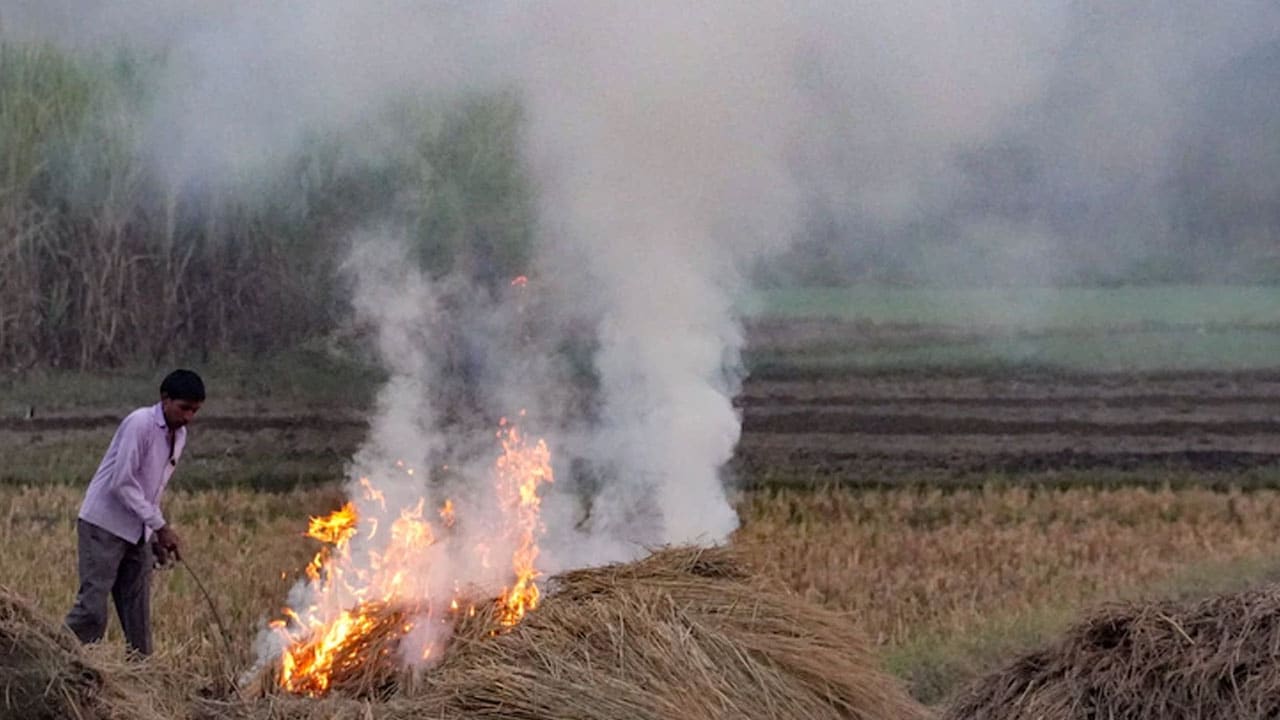- Home/
- Air Pollution: How It Can Damage Your Eyes, Tips To Stay Safe This Winter
Air Pollution: How It Can Damage Your Eyes, Tips To Stay Safe This Winter

Air pollution is the invisible threat that is silently effecting the eyes. The most sensitive part of the body is under constant threat from the rise in air pollutants all around us. Dry eyes, redness, swelling, and burning eyes are all side effects that can be experienced if there is constant exposure to heavy metals in the air. The particulate matter settles on the surface of the eyes, resulting in discomfort, irritation, and many other eye conditions. In order to combat this rising threat, it is imperative to know the necessary symptoms, long-term risks, and simple ways to protect the eyes from the dangerous spike in air pollution.
The Science Of Eye Damage: How Pollutants Attack The Eyes
The eyes are a mucous membrane that is directly exposed to the polluted air present in indoor and outdoor spaces. Here are four major pollutants that impact eye health that are present in the hazardous level air quality:
1. Particulate Matter
The particulate matter (PM) 2.5 and PM10 are not just a respiratory system concern, but remain a growing threat to the eyes as well. The tiny irritating particles cause direct irritation that results in constant rubbing of the eyes, which can worsen the problem. Touching the eyes frequently without properly washing your hands can introduce toxins that can damage the sensitive outer layer of the eyes.
2. Ozone
The presence of ozone in the polluted air can even cause chemical burns in the eyes, which is an alarming issue that needs immediate medical attention for treatment. This highly reactive gas can increase oxidative stress on the eyes, resulting in the development of various eye issues and impairing vision in the long term.
3. Nitrogen Dioxide And Sulfur Dioxide
These two industrial air pollutants can enter the eyes through repeated exposure to polluted air in the outdoors and can also be trapped inside in commercial spaces. The pollutants get dissolved in the tear film of the eyes, forming mild acids and leading to chemical irritation. Along with this serious impact, they also inflame the outer layer of the eyes, which is one of the main causes of swelling.
4. Volatile Compounds
The cleaning products that are used to maintain hygiene and paints used in commercial and housing spaces emit harmful aerosolised vapours that can settle in the lungs.
Symptoms Of Air Pollution Eye Damage
There are various symptoms that can indicate that the rising air pollution is effecting eye health, but there are two types of these symptoms. Here are some short-term symptoms of how rising air pollution is affecting eye health:
The outer layer of the eyes is destabilized as the air pollutants break down the protective outer layer in the eyes. This causes rapid evaporation, which leads to the development of dry eyes, irritation, and sometimes even swelling if the eyes are being touched constantly.
- Air pollution triggers the release of inflammation molecules on the surface of the eyes, leading to chronic redness, irritation, and cellular damage.
- Allergic response gets triggered as the particles carrying allergens enter the eyes, leading to conjunctivitis and symptoms of severe allergies.
- While long-term exposure to air pollutants can lead to the following symptoms:
- Developing dry eye syndrome is the most common link to consistent exposure to air pollutants.
As grittiness, burning, watering of eyes for a long-term of period of time can signal that particulate matter is effecting eye health.
- Allergic conjunctivitis can be contracted if there are seasonal flare-ups of particulate matter, as it happens in the dry winter months in northern India.
- Blepharitis, an eye condition caused due to inflamed eyelids from repeated environmental toxins settling on the lash line.
- The most alarming result of long-term exposure to air pollution is the increased chances of developing cataracts and progression of existing eye conditions.
How To Protect Your Eyes
There are simple ways and practical solutions to protect the eyes, both in indoor and outdoor spaces:
- Improve the indoor air quality by using air purifiers and monitoring air quality readings before stepping out.
- Wearing sunglasses outdoors during early mornings and late evenings when the air pollution is heightened.
- Practicing proper eye hygiene by using medically prescribed lubricant eye drops to wash the pollutants twice a day.
- Consuming Omega-3-rich foods to boost the immune system.
It is important to know when there is a need to see a medical professional. If there are persistent symptoms, then it is essential to visit an ophthalmologist.
There are practical ways to protect the eyes from long-term damage from air pollution, but the most important part is to breathe and exist in clean air.
Related Articles:
Poor AQI: Odd Ways Air Pollution Is Affecting Your Health Without You Realising
Can Pollution Mess With Hormones? What Everyone Must Know About AQI And Fertility
Air Pollution Emerging As A Threat To Child Brain Development, Doctors Warn, Parents Worry
Disclaimer: This content, including advice, provides generic information only. It is in no way a substitute for a qualified medical opinion. Always consult a specialist or your own doctor for more information. NDTV does not claim responsibility for this information.
also read
Latest Stories
- Written by Aastha Ahuja | Thursday November 20, 2025 , New Delhi
The air quality index (AQI) is a public health tool designed to communicate air pollution levels or the quality of air in simple terms.
- Press Trust of India | Thursday November 20, 2025 , New Delhi
Health experts have flagged that the toxic air poses heightened risks to expectant mothers and their babies.
- Reported by Ishika Verma | Wednesday November 19, 2025 , New Delhi
After weeks of parents, students and residents taking to the streets over Delhi's choking air, the city government on Wednesday finally opened its doors to those leading the protest.
- Written by Mohit Bhardwaj | Wednesday November 19, 2025
Here are 5 practical tips to reduce air pollution exposure while driving, as Delhi-NCRs air quality deteriorates, with AQI levels hitting severe marks despite failed artificial rain efforts.
- Written by Rupashi Chhabra | Wednesday November 19, 2025
The invisible threat is silently damaging your eyes. Here are some easy ways to protect your eyes from air pollution.
................................ Advertisement ................................
Latest Videos
Opinion
Blog | Well Done, Delhi. You've Turned Lung Sacrifice Into A Badge Of HonourSaikat Kumar Bose
Monday November 10, 2025Till some years back, Delhiites would ask angry questions to those in power about the capitals annual tryst with toxic air. This has changed. Those in the driving seat dont see the need to answer now.
Opinion | Why Indians Have Just Given Up On Air Pollution CrisisTanushree Ganguly
Friday December 20, 2024While some may argue that people in Delhi are now more aware of air pollution than they were a decade back, my rebuttal would be that awareness does not mean that people are concerned.
Opinion | You Must Outrage Over Filthy Air More Than Once A YearJyoti Pande Lavakare
Tuesday December 10, 2024Delhi welcomed us with monsoon rains and mangos. We were home. Fast forward a couple of years, in the winter of 2012, I found myself in denial about something other parents, mostly expats, were calling toxic air.
Opinion | Delhi's Air Pollution Situation Is Like A Bad MarriageNishtha Gautam
Friday November 22, 2024On a good day, such as today, the AQI reading in Delhi is 407. We are jubilant at the sickly sunshine trickling through the slightly dissipated smog. At least its not 1600.
दिवाली... पराली... सियासी जुगाली!Ashwini kumar
Monday November 18, 2024दिल्ली-एनसीआर में प्रदूषण का समाधान तो आज तक मिला नहीं. हर साल चिंतित होकर हम-आप सांसों की तकलीफ के साथ-साथ दिल और ब्लड प्रेशर के मरीज भी क्यों बनें?


















